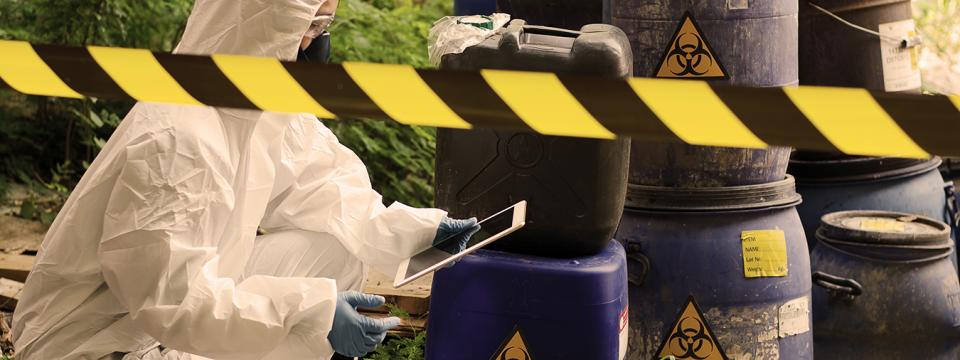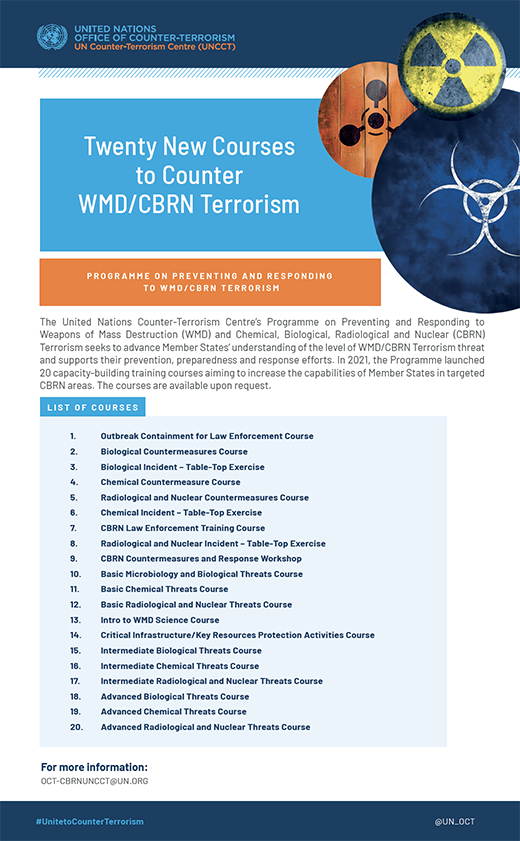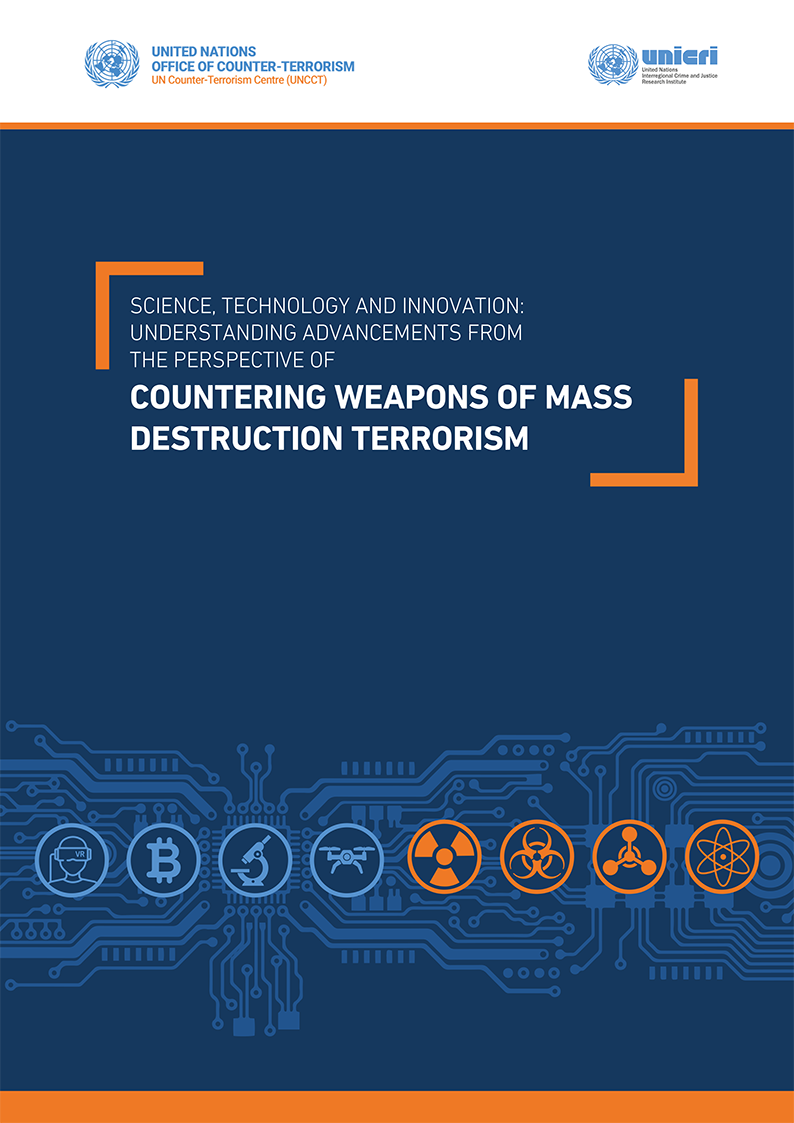Chemical, biological, radiological and nuclear terrorism

Chemical, biological, radiological and nuclear terrorism. Photo: UNOCT stock photo
The prospect of non-State actors, including terrorist groups and their supporters, gaining access to and using weapons and materials of mass destruction is a serious threat to international peace and security.
-- Under-Secretary-General Vladimir Voronkov in foreword of the UNOCT Publication Ensuring Effective Interagency Interoperability and Coordinated Communication in Case of Chemical and/or Biological Attacks.
Radiological and Nuclear Threat – Illicit Trafficking
Could terrorists prepare a ‘dirty bomb’ technically known as radiological dispersal device (RDD) to carry out a terrorist attack? UNCCT and the Global Initiative to Combat Nuclear Terrorism (GICNT) are working together to support Member States to counter the threat.
Biological Threat – Misuse of Biotechnology
Could biotechnology be misused to produce new strains of viruses with the intention of perpetrating terrorist attacks? UNCCT, UNICRI and the UN Global Counter-Terrorism Coordination Compact are investing efforts to understand this threat and how technology could be used as a solution.
Chemical Threat – Clandestine Laboratories
How can Member States prevent, interdict and investigate terrorist chemical laboratories? UNCCT and the Department of State of the United States of America are supporting Iraq in these efforts through virtual reality trainings.
International peace and security
The UN Security Council has specifically addressed the threat of weapons of mass destruction and chemical, biological, radiological and nuclear terrorism on a number of occasions. In resolution 1373 (2001), the Council recognized the connection between international terrorism and, inter alia, the illegal movement of such materials. Its seminal pronouncement on the issue came in the form of resolution 1540 (2004), through which the Council affirmed that the proliferation of chemical, biological, radiological and nuclear weapons and their means of delivery constitutes a threat to international peace and security.
More recently, the Security Council again called on Member States in resolution 2325 (2016) to strengthen their national anti-proliferation regimes in the implementation of resolution 1540 (2004).
To this end, the UN Global Counter-Terrorism Strategy calls upon the Member States, International Organizations and the UN System to:
- Combat smuggling of chemical, biological, radiological and nuclear materials
- Ensure that advances in biotechnology are not used for terrorist purposes
- Improve border and customs controls to prevent and detect illicit trafficking of chemical, biological, radiological and nuclear weapons and materials
- Improve coordination in planning a response to a terrorist attack using chemical, biological, radiological and nuclear weapons or materials
In the Sixth Review of the Counter-Terrorism Strategy, the General Assembly called upon all Member States to “prevent terrorists from acquiring weapons of mass destruction and their means of delivery… and [encouraged] cooperation among and between Member States and relevant regional and International Organizations for strengthening national capacities in this regard.”
WMD / CBRN Programming
In response to this global threat, UNOCT through UNCCT has developed the Programme on Preventing and Responding to Weapons of Mass Destruction/Chemical Biological, Radiological and Nuclear (WMD/CBRN) Terrorism that seeks to advance Member States’ and International Organizations understanding of the level of their threat in relation to terrorism. Our Programme supports their prevention, preparedness and response efforts at their request.
Through our Programming, UNOCT/UNCCT also seeks to strengthen partnerships for, and to provide capacity-building support to requesting Member States. These partnerships focus on areas such as border and export control, strategic trade control, illicit trafficking, protection of CBRN materials and critical infrastructure, incident response and crisis management, and forensics, among others.
Counter-terrorism resources
Publications
Books and other types of publications about Weapons of Mass Destruction/Chemical Biological, Radiological and Nuclear materials.



